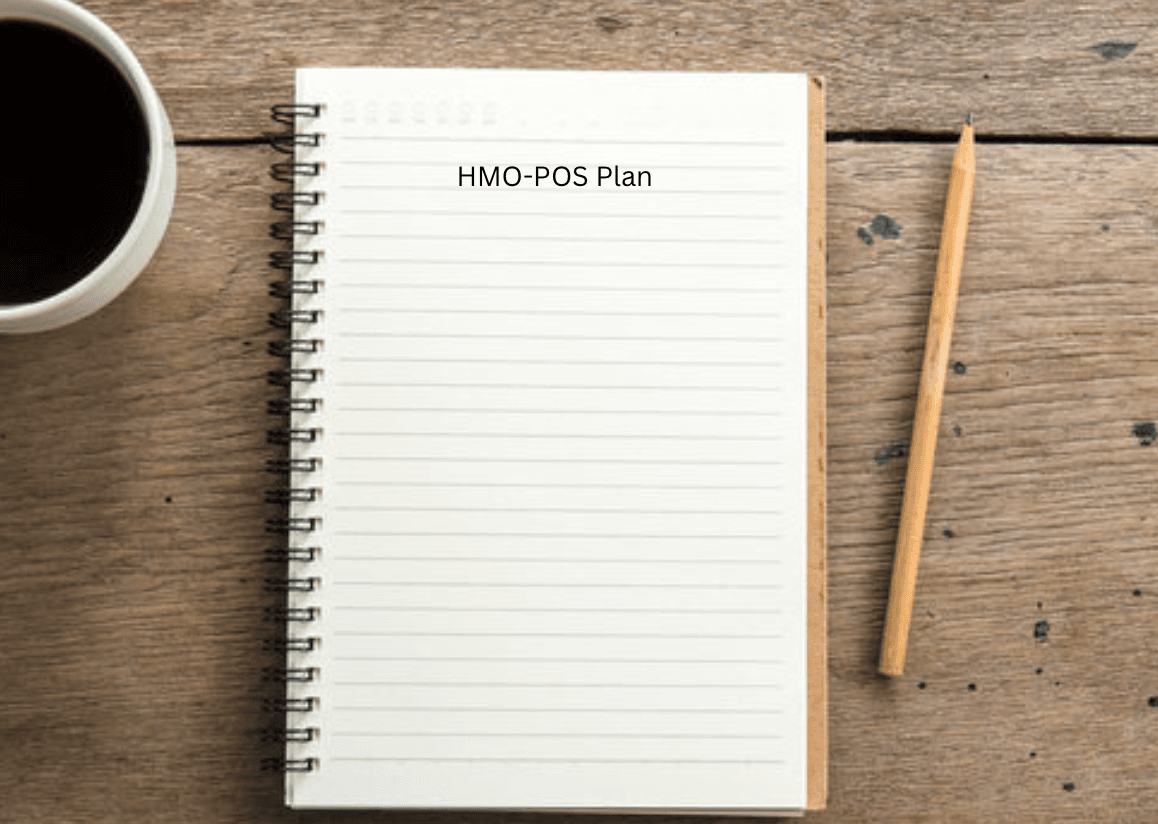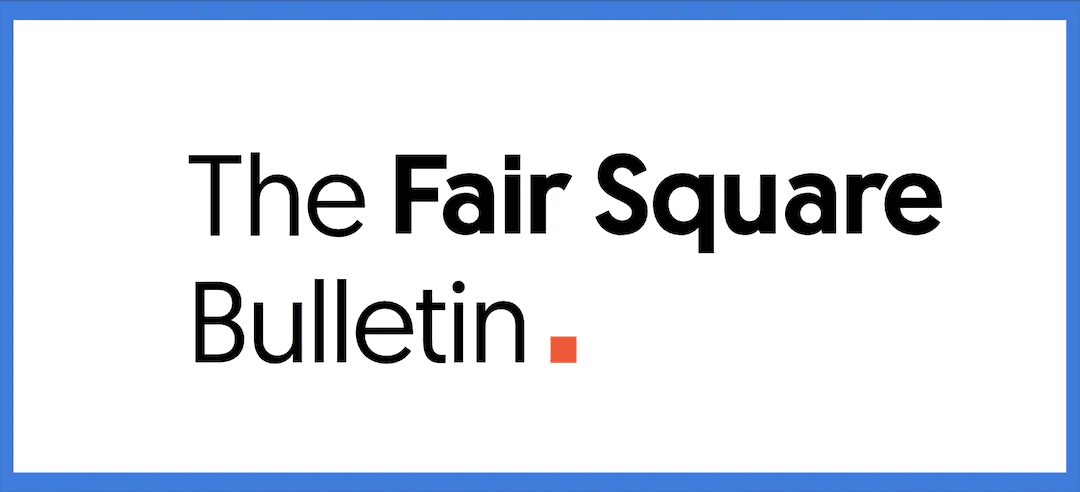An in-depth look at different scenarios leading to devastating bills
The most common question from our New to Medicare clients is: “How can I avoid catastrophically expensive medical bills?” 1 in 10 Medicare beneficiaries spent at least 52% of their income
Speak with a Medicare Advocate
Another analogy is more useful to represent how you can avoid a catastrophe and save money when enrolling in Medicare. Would you rather buy your winter coat in the summer when you might be able to get it for half the price, or wait for the winter when you might have to pay for a markup or the coat you want is no longer in stock? At Fair Square Medicare, we want to empower you to consider the long term implications of what Medicare option you choose and when you choose it.
Know Your Options
There are several different options you can choose when enrolling for Medicare:
Door 1 - Original Medicare: Parts A & B
You are responsible for the Part A Deductible of $1,676 per 60 day benefit period for Hospital Coverage, the Part B Monthly Premium of at least $185 depending on your income, and 20% Coinsurance (Medicare will cover the 80%) for Medical Coverage.
You can visit any hospital that accepts Medicare.
OM is the bare-bones package. Maybe you have a retirement health insurance plan that can pay secondary. If you go with this option, you are essentially paying the least upfront while leaving yourself most exposed to potential risks.
Drug Plan (Part D) is not included; it can be purchased separately.
Door 2 - Medicare Advantage
You might have low or no monthly premium with some plans, but you will be responsible for the Maximum Out-of-Pocket Costs which are stipulated by your insurance carrier for each year you are on the plan.
There are two types of plans:
HMO - in-network only. If you pursue care outside their network, you will pay the cost totally out-of-pocket.
PPO - you can pursue out-of-network medical services but you may pay a higher cost-share.
No underwriting is required to change into Medicare Advantage. However, if you want to switch to a Medigap Plan, you need to go through underwriting if you don’t switch within your first year of eligibility.
Drug Plan (Part D) is included.
Medicare Advantage plans are often referred to as the Pay As You Go option. You will still have your Part B premium from Original Medicare; you will receive the same coverage as Original Medicare with some potential added benefits of vision, dental, and other services.
Door 3 - Medigap (also known as Medicare Supplement)
You pay an additional monthly premium, but you don’t have any out-of-pocket costs on many plans. For this article, we’ll consider the most common Medicare Supplement: Plan G.
You can visit any provider or hospital that accepts Medicare.
In many cases, no underwriting is required to sign up. However, as mentioned earlier, you might need to go through underwriting if you are switching into this plan. We’ll talk through an example later about how this might play out, but what’s important to know is that it’s harder to join this plan later.
Drug Plan (Part D) and other ancillary benefits are purchased separately.
The Common Catastrophe
Let’s imagine someone newly eligible for Medicare having just turned 65. They eat well, exercise regularly, and visit with their primary care physician once a year for a check-up during which the doctor can offer only as much as “Keep up the good work.”
They are taking a walk around the neighborhood when they suddenly slip on the sidewalk. Before they know it, they have broken a hip. This might seem like a freak accident, but over 300,000 Medicare eligible individuals break a hip each year. Whether it happens during their first year of Medicare or during their 20th, the decision they made when first choosing a Medicare plan can impact their treatment and payment for years to come.
Door 1 - Original Medicare
This person thought they didn’t need to consider other forms of coverage since they were totally healthy. Maybe they had planned to spend more on healthcare and get better coverage as they entered their 70s or 80s, but they did not anticipate needing this much coverage so suddenly.
Instead, they’re trying to make it through winter with only
a hat and gloves
.Immediately after their fall, they are admitted as an inpatient to the emergency room; they pay the $1,676 deductible.
This might seem like a manageable cost given the severity of a broken hip, but think of all of the potential complications of such a significant injury.
They have surgery, physical therapy, nerve blocks for pain, and more. They would have to pay 20% coinsurance for all of the costs outside of the inpatient hospital admission.
After a few months, they elect to get hip replacement surgery. That’s another deductible of $1,676 since the benefit period is reset after 60 days from the first accident. Plus the 20% coinsurance of all the rehab and pain associated costs again. You can see how these costs will pile up. And with only Original Medicare, there is no Out-of-Pocket maximum to protect them.
From a 2025 study, the average cost of receiving treatment for a hip fracture is $50,000. They might be on the hook for at least 20% of that.
How much does this cost over 2 years?
Part A - $1,676 deductible + $1,676 deductible = $3,352
Part B -
$257 deductible ($257 in 2025) × 2 = $514
$185 premium × 24 = $4,440
20% of $50,000 = $10,000
Total = $18,306
Door 2 - Medicare Advantage
This gives them more coverage than just Original Medicare, but they might still be leaving themselves exposed.
Let’s say they picked an HMO plan because that was the cheapest option, and their PCP was in-network.
If they set up their Medicare Advantage plan in Florida, but break their hip in New York, all non-emergency services (like physical therapy, a follow up with the orthopedic surgeon, even the person reading the X-Ray results to the patient) will be out-of-network and not covered. They could still get in network coverage, but it would likely require getting on a plane with a recently surgically repaired hip. Sounds unpleasant.
If they wanted one specific doctor to fix their hip who happened to be out-of-network, they might have to pay the total cost out-of-pocket.
A PPO plan gives them more flexibility to see someone out of their network if they are traveling. They will have their hard cap on spending with the yearly Out-of-Pocket Maximum, which will depend on their choice of plan.
How much does this cost over 2 years?
Monthly Premium of $1850 × 24 = $4,440
A realistic scenario with an ambulance ($300), 5 day hospital stay ($300 per day for first week), weekly physical therapy ($10 copayment), monthly specialist visits ($35 copayment), and monthly primary care visits ($10 copayment) will have them spending ($300 + $1500) + (104 × $10) + (24 × $25) + (24 × $10)
Total = $1800 + $1,040 + $840 + $240 = $3,920 + $4,440 = $8,360
A worst-case scenario will see them hit Max. Out-of-Pocket Cost of $5,500 per year × 2 = $11,000
Total = $16,720
Door 3 - Medigap (Specifically, Plan G)
They picked the plan with the higher monthly premiums, but it might save them money in the long run by avoiding out-of-pocket costs.
Because they signed up for Medigap during their first window of eligibility, they didn’t have to go through Medical Underwriting which could deny them coverage or raise their premium.
Medigap is the option that might cost the most on a monthly basis, but might also give them the most flexibility moving forward.
They can see any doctor that accepts Medicare, there are no networks to fuss over.
They have minimal or no out-of-pocket costs except monthly premiums.
Since they signed up for Plan G, they are also covered against Excess Charges, which can be up to 15% above what Medicare allows for a service.
How much does this cost over 2 years?
Monthly Premium ($185 + $150) × 24 = $8,040
Annual Part B Deductible of $257 × 2 = $514
Total: $8,554
A broken hip is just one example of how your decision when you first enroll in Medicare can either pay dividends or cause major headaches in terms of financial strain and/or access to care later on. Let’s talk through some more examples, some of which are real stories from real Fair Square Medicare clients:
Making Your First Call the Right Call
In order to save money, our client Brenda* started off with just Original Medicare when she turned 65 over a year ago. Her husband was a year younger, and she decided to wait a year so they could shop for a supplement plan together.
“I didn’t have someone like Fair Square Medicare to call, so I was just going to do the basic stuff,” Brenda said. “I didn’t understand the ramifications.”
When it came time to pick a plan, she had to go through Medical Underwriting with United Healthcare for a Medigap plan. The underwriter found a Chronic Kidney Disease (CKD) stage 3 diagnosis, the result of removing kidney stones a couple years ago.
“I honestly had no idea they could pull up all these old records,” she said. “It was all a big surprise that they came back with that information”
Through testing with her primary care physician and her nephrologist, they determined that she no longer had stage 3. But she still had to endure the bureaucratic process of getting her PCP and nephrologist to submit that she was downgraded to stage 2 only for the insurance company to reject their diagnosis. The insurance company said she needed to find a new nephrologist to accept that diagnosis, but because she was healthy enough to not require urgent attention, she couldn’t find a new nephrologist.
“As a former nurse, I know what’s going on with me,” Brenda said. “I’m healthy and the bureaucracy is bogus.” She is still in the midst of finding a new nephrologist to get the forms submitted.
Because she had to go through Medical Underwriting, the insurance company raised her monthly premium from a manageable $150 to $355 for the same plan. Her next step to try to cut down on monthly costs will be a conversation with one of our agents in October to see if there is a Medicare Advantage plan that will save her money without too much potential for high out-of-pocket costs. The MAPD route worked for Brenda in her current situation, but she acknowledged that if kidney issues arise again, she could pay more years later.
“As long as I stay in good shape. But at 66 you never know,” she said. “Something could change tomorrow. I’m having to risk it and live with their decision.”
Seeking Care Outside Your Network
Another client of ours was living in Colorado with a Medicare Advantage Plan under Kaiser. They were diagnosed with prostate cancer. There are multiple treatment options for this kind of cancer, including proton therapy. Proton therapy is a form of radiation that might be more discriminating in which cells it targets than standard radiation. This was the treatment the client was most interested in pursuing, except their HMO plan would not allow them. Unless they could afford to pay for this treatment entirely out-of-pocket, it would be denied to them. In this case, the client was able to switch into a Medigap plan through a reputable carrier for a premium of $500 a month. If they didn’t have to go through underwriting, this premium would likely be significantly lower.
For one of our clients in a PPO Medicare Advantage plan, the decision to go out-of-network was not entirely up to them. They were doing physical therapy after a surgery when their usual therapist called in sick. Turns out the substitute physical therapist was out of their network, and they received a bill they weren’t expecting. They now have to either foot the bill, or go through a lengthy appeal process to see if the rehab center gave sufficient notice of the potential for out-of-network costs. Here’s a tool from the CMS to research which providers have opted-out of Medicare
If you think you might need more flexibility with seeing a doctor outside of a network, you should strongly consider choosing a Medigap plan.
Right Place, Right Time
Many people delay enrolling in Medicare, but not everyone thinks of the consequences. Some believe that they are too healthy to pay extra for health insurance. Especially if your monthly premiums are impacted by IRMAA, which is a premium surcharge on your Part B and Part D premiums based on your income from 2 tax years prior.
Our client Mitch* was happy to stick with his health insurance plan that he got from the marketplace when he turned 65. He did not have the whole picture of the costs associated with Medicare, because he will now have to pay a Late Enrollment Penalty for Part B and Part D. Once you miss eligibility, you have to pay the LEP for life:
For Part B, 10% of your premium for each year you’re without coverage.
For Part D, 1% of your premium for each month you’re without coverage.
Mitch realized the mistake, but he was outside of his enrollment window. Not only would he have to wait until January to get the Medicare coverage he was hoping for, but he would have to pay the LEPs for each month that he did not have proper coverage.
The initial enrollment period is crucial, but don’t forget to reevaluate your coverage each year to make sure you’re in the best position. You can save money by getting a household discount based on being on the same plan as your spouse. One of our clients was sold on a Plan G policy after going through underwriting. After his first year on his Medigap plan, his premium jumped by $50 a month. Once his wife turned 65, they joined the same plan, and he got an underwritten policy for $100 less than he would have had to pay on his original Plan G. Rather than spending an extra $600 a year, he saved that much.
Conclusion
As you’ve heard before, Medicare is a minefield. All of this information can be overwhelming to consider, and you don’t want to put a foot wrong if you can help it. Everyone has different healthcare priorities and unique circumstances, but remember the following to help navigate the system:
Your plan should fit your budget, risk preference, coverage needs, and your lifestyle.
Evaluate if you should stick with the plan you are currently committed to, or if you can switch to a potentially better fit plan.
You can switch plans annually, but your first choice of Medicare plan is crucial as it can close some doors.
There are many options to choose from, and some of which can put you in a precarious situation. If you have a predicament similar to what you read above, we can figure out the best course of action for you. Trust the experts at Fair Square Medicare to help you find the best plan for you now and later. Call us at 1-888-376-2028.
*Names changed for privacy reasons.
Recommended Articles

Does Medicare Cover Cardiac Ablation?
Dec 9, 2022

Does Medicare Cover Robotic Surgery?
Nov 28, 2022

How Much Does Rexulti Cost with Medicare?
Jan 24, 2023

Does Medicare Cover Inspire for Sleep Apnea?
Dec 27, 2022

14 Best Ways for Seniors to Stay Active in Washington, D.C.
Mar 11, 2023

Does Medicare Cover Breast Implant Removal?
Jan 5, 2023

Does Medicare Cover RSV Vaccines?
Sep 13, 2023

What Is a Medicare Advantage POS Plan?
May 10, 2023

Medicare Deductibles Resetting in 2025
Jan 18, 2024

What is the Medicare ICEP?
Apr 7, 2023

How Does Medicare Pay for Emergency Room Visits?
Nov 21, 2022

Finding the Best Dental Plans for Seniors
Jan 4, 2023

What If I Don't Like My Plan?
Jun 8, 2020

Fair Square Client Newsletter: AEP Edition
Oct 2, 2023

What is the 8-Minute Rule on Medicare?
Dec 21, 2022

Does Medicare Cover Hoarding Cleanup?
Jan 10, 2023

Does Medicare Cover Driving Evaluations?
Dec 1, 2022

13 Best Ways for Seniors to Stay Active in Philadelphia
Mar 7, 2023
More of our articles
14 Best Ways for Seniors to Stay Active in Seattle
14 Best Ways to Stay Active in Charlotte
15 Best Ways for Seniors to Stay Active in Denver
2024 Cost of Living Adjustment
2024 Fair Square Client Retention and Satisfaction Report
Building the Future of Senior Healthcare
Can Doctors Choose Not to Accept Medicare?
Can I Choose Marketplace Coverage Instead of Medicare?
Can Medicare Advantage Plans be Used Out of State?
Comparing All Medigap Plans | Chart Updated for 2025
Denied Coverage? What to Do When Your Carrier Says No
Do All Hospitals Accept Medicare Advantage Plans?
Do I Need Medicare If My Spouse Has Insurance?
Do Medicare Supplement Plans Cover Dental and Vision?
Do You Need Books on Medicare?
Does Medicare Cover Bariatric Surgery?
Does Medicare Cover Bladder Sling Surgery?
Does Medicare Cover Cartiva Implants?
Does Medicare Cover Cataract Surgery?
Does Medicare Cover Compounded Medications?
Does Medicare Cover COVID Tests?
Does Medicare Cover Disposable Underwear?
Does Medicare Cover ESRD Treatments?
Does Medicare Cover Hepatitis C Treatment?
Does Medicare cover Hyoscyamine?
Does Medicare Cover Hypnotherapy?
Does Medicare Cover Iovera Treatment?
Does Medicare Cover Nexavar?
Does Medicare Cover Piqray?
Does Medicare Cover PTNS?
Does Medicare Cover Qutenza?
Does Medicare Cover SI Joint Fusion?
Does Medicare Cover the WATCHMAN Procedure?
Does Medicare Cover Zilretta?
Does Medicare Pay for Antivenom?
Does Medicare pay for Opdivo?
Does Medicare Require a Referral for Audiology Exams?
Explaining IRMAA on Medicare
Fair Square Bulletin: We're Revolutionizing Medicare
Finding the Best Vision Plans for Seniors
Gap Health Insurance: The Secret Sidekick to Your High-Deductible Plan
Health Savings Accounts (HSAs) and Medicare
How Are Medicare Star Ratings Determined?
How Does Medicare Cover Colonoscopies?
How Does the End of the COVID-19 Public Health Emergency Affect Your Medicare?
How is Medicare Changing in 2025?
How Much Does a Medicare Coach Cost?
How Much Does Trelegy Cost with Medicare?
How Much Does Xeljanz Cost with Medicare?
How to Enroll in Social Security
Is Botox Covered by Medicare?
Is Displacement Affecting Your Medicare Coverage?
Is Fair Square Medicare Legitimate?
Is Gainswave Covered by Medicare?
Is the Shingles Vaccine Covered by Medicare?
Medicare 101
Medicare Advantage Plans for Disabled People Under 65
Medicare Consulting Services
Medicare Guaranteed Issue Rights by State
Medigap Plan N vs. Plan G — Which One Fits You in 2025?
Moving? Here’s What Happens to Your Medicare Coverage
Should You Work With A Remote Medicare Agent?
The Easiest Call You'll Ever Make
Turning 65 and Thinking of Keeping COBRA? Here’s Why It Usually Backfires
Welcome to Fair Square's First Newsletter
What is a Medicare Beneficiary Ombudsman?
What is Plan J?
What People Don't Realize About Medicare
What to Do When Your Doctor Leaves Your Network
Which Medigap Policies Provide Coverage for Long-Term Care?
Will Medicare Cover Dental Implants?
Will Medicare Cover it?
Get the Fair Square Bulletin
Medicare savings tips, helpful guides, and more.
Virgil Insurance Agency, LLC (DBA Fair Square Medicare) and www.fairsquaremedicare.com are privately owned and operated by Help Button Inc. Medicare supplement insurance plans are not connected with or endorsed by the U.S. government or the federal Medicare program. This is a solicitation of insurance. A licensed agent/producer may contact you. Medicare Supplement insurance is available to those age 65 and older enrolled in Medicare Parts A and B and, in some states, to those under age 65 eligible for Medicare due to disability or End-Stage Renal disease. Virgil Insurance Agency is a licensed and certified representative of Medicare Advantage HMO, HMO SNP, PPO, PPO SNP and PFFS organizations and stand-alone PDP prescription drug plans. Each of the organizations we represent has a Medicare contract. Enrollment in any plan depends on contract renewal. The plans we represent do not discriminate on the basis of race, color, national origin, age, disability, or sex. Plan availability varies by region and state. For a complete list of available plans please contact 1-800-MEDICARE (TTY users should call 1-877-486-2048), 24 hours a day/7 days a week or consult www.medicare.gov. © 2025 Help Button Inc
We do not offer every plan available in your area. Any information we provide is limited to those plans we do offer in your area. Please contact Medicare.gov or 1-800-MEDICARE to get information on all of your options.
MULTIPLAN_FairSquareMedicare_01062022_M
Fair Square Medicare


